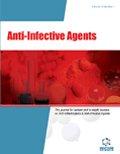Abstract
As the human race is still threatened by prospective avian flu endemics, new motivations and systematic approaches should be placed high on agenda in order to alleviate the potential losses of both human life and local economics. A balance and comprehensive measures between economy and the ecosystem of the endemic regions must also be considered. One of the top priorities in these explorations should be effective therapy for infected patients, including better uses and applications of vaccines and antiviral agents. In order to be better prepared for prospective avian flu epidemics, experimental and theoretical inquiry of therapeutic and technical feasibilities against avian viruses in humans deserve to be priority concerned, and extensive experimental and clinical exploitations of fatal pathogenesis of virus infection in human cells at genetic and cytological levels, are urgently needed. In this review, we address and discuss these important questions and review some important solutions for avian flu in future, including antiviral agents, virus vaccinations, Chinese medicine and genetic treatment of the disease.
Keywords: Avian flu, influenza virus, viral pathogenesis, viral treatment, antiviral agents, viral vaccine, human genome, viral genetic pathogenesis, traditional Chinese medicine, medicinal chemistry, neuraminidase inhibitors
Anti-Infective Agents
Title:Avian Flu; Pathogenesis and Therapy
Volume: 10 Issue: 2
Author(s): Da-Yong Lu, Ting-Ren Lu and Hong-Ying Wu
Affiliation:
Keywords: Avian flu, influenza virus, viral pathogenesis, viral treatment, antiviral agents, viral vaccine, human genome, viral genetic pathogenesis, traditional Chinese medicine, medicinal chemistry, neuraminidase inhibitors
Abstract: As the human race is still threatened by prospective avian flu endemics, new motivations and systematic approaches should be placed high on agenda in order to alleviate the potential losses of both human life and local economics. A balance and comprehensive measures between economy and the ecosystem of the endemic regions must also be considered. One of the top priorities in these explorations should be effective therapy for infected patients, including better uses and applications of vaccines and antiviral agents. In order to be better prepared for prospective avian flu epidemics, experimental and theoretical inquiry of therapeutic and technical feasibilities against avian viruses in humans deserve to be priority concerned, and extensive experimental and clinical exploitations of fatal pathogenesis of virus infection in human cells at genetic and cytological levels, are urgently needed. In this review, we address and discuss these important questions and review some important solutions for avian flu in future, including antiviral agents, virus vaccinations, Chinese medicine and genetic treatment of the disease.
Export Options
About this article
Cite this article as:
Lu Da-Yong, Lu Ting-Ren and Wu Hong-Ying, Avian Flu; Pathogenesis and Therapy, Anti-Infective Agents 2012; 10 (2) . https://dx.doi.org/10.2174/2211362611208020124
| DOI https://dx.doi.org/10.2174/2211362611208020124 |
Print ISSN 2211-3525 |
| Publisher Name Bentham Science Publisher |
Online ISSN 2211-3533 |
 19
19
- Author Guidelines
- Bentham Author Support Services (BASS)
- Graphical Abstracts
- Fabricating and Stating False Information
- Research Misconduct
- Post Publication Discussions and Corrections
- Publishing Ethics and Rectitude
- Increase Visibility of Your Article
- Archiving Policies
- Peer Review Workflow
- Order Your Article Before Print
- Promote Your Article
- Manuscript Transfer Facility
- Editorial Policies
- Allegations from Whistleblowers
- Announcements
Related Articles
-
Patterns of Self-Medication with Medicinal Plants and Related Adverse Events - A South American Survey
Current Drug Safety Sustained Delivery of Interferons by Micro- and Nanosystems
Recent Patents on Materials Science Establishing Maternal Tolerance: The Role of Regulatory T Cells (Tregs) in Pregnancy and Pathophysiology of Preeclampsia
Current Women`s Health Reviews BAFFling Autoimmune Disorders and Helicobacter pylori Disease: The Interplay between BAFF and the Th17 Response
Clinical Immunology, Endocrine & Metabolic Drugs (Discontinued) Syntheses and Biological Activities of triazole-based Sulfonamides
Current Organic Chemistry Insights into the Microbial L-Asparaginases: from Production to Practical Applications
Current Protein & Peptide Science Central Insulin and Insulin-Like Growth Factor-1 Signaling - Implications for Diabetes Associated Dementia
Current Diabetes Reviews Resisting the Sun with Vitamin D
Immunology, Endocrine & Metabolic Agents in Medicinal Chemistry (Discontinued) Peptides in Melanoma Therapy
Current Pharmaceutical Design Mesenchymal Stem/Stromal Cells: A New "Cells as Drugs" Paradigm. Efficacy and Critical Aspects in Cell Therapy
Current Pharmaceutical Design The Possible Therapeutic Actions of Peroxisome Proliferator-Activated Receptor α(PPARα) Agonists,PPARγ Agonists,3-Hydroxy-3- Methylglutaryl Coenzyme A (HMG-CoA)Reductase Inhibitors,Angiotensin Converting Enzyme (ACE)Inhibitors and Calcium (Ca)-Antagonists on Vascular Endothelial Cells
Current Drug Targets - Cardiovascular & Hematological Disorders Extracellular Vesicles Isolated from Mesenchymal Stromal Cells Primed with Hypoxia: Novel Strategy in Regenerative Medicine
Current Stem Cell Research & Therapy Application of Novel Nanotechnology Strategies in Plant Biotransformation: A Contemporary Overview
Recent Patents on Biotechnology Polyphenols Beyond Barriers: A Glimpse into the Brain
Current Neuropharmacology Role of Sulforaphane in Protection of Gastrointestinal Tract Against H. pylori and NSAID-Induced Oxidative Stress
Current Pharmaceutical Design A New Therapeutic Era in GCB and ABC Diffuse Large B-cell Lymphom a Molecular Subtypes: A Cell of Origin-Driven Review
Current Cancer Drug Targets Adventure of Recombinant Human Activated Protein C in Sepsis and New Treatment Hopes on the Horizon
Recent Patents on Inflammation & Allergy Drug Discovery Multiplex Analysis of Cardiac Hypertrophic Signaling: Reduced in vivo Phosphorylation of Glycogen Synthase Kinase-3β and Proline-Rich Akt Substrate (PRAS40)
Current Signal Transduction Therapy Humanized Cobra Venom Factor: Experimental Therapeutics for Targeted Complement Activation and Complement Depletion
Current Pharmaceutical Design Src Family Kinases: Potential Targets for the Treatment of Human Cancer and Leukemia
Current Pharmaceutical Design


























